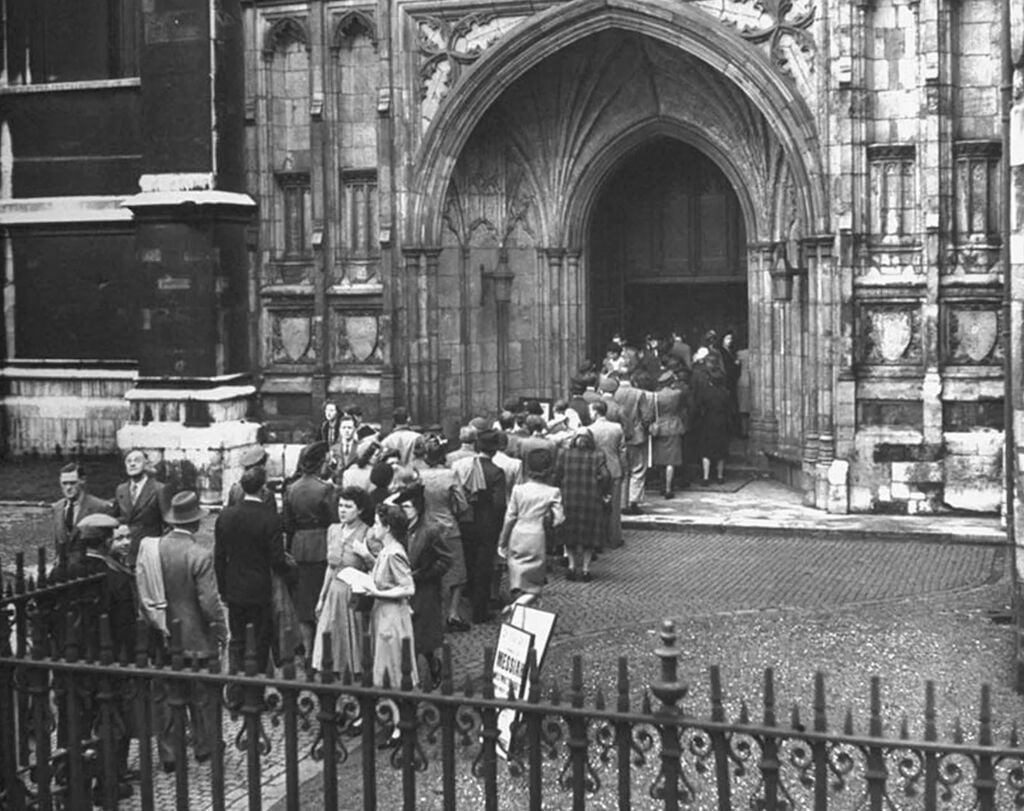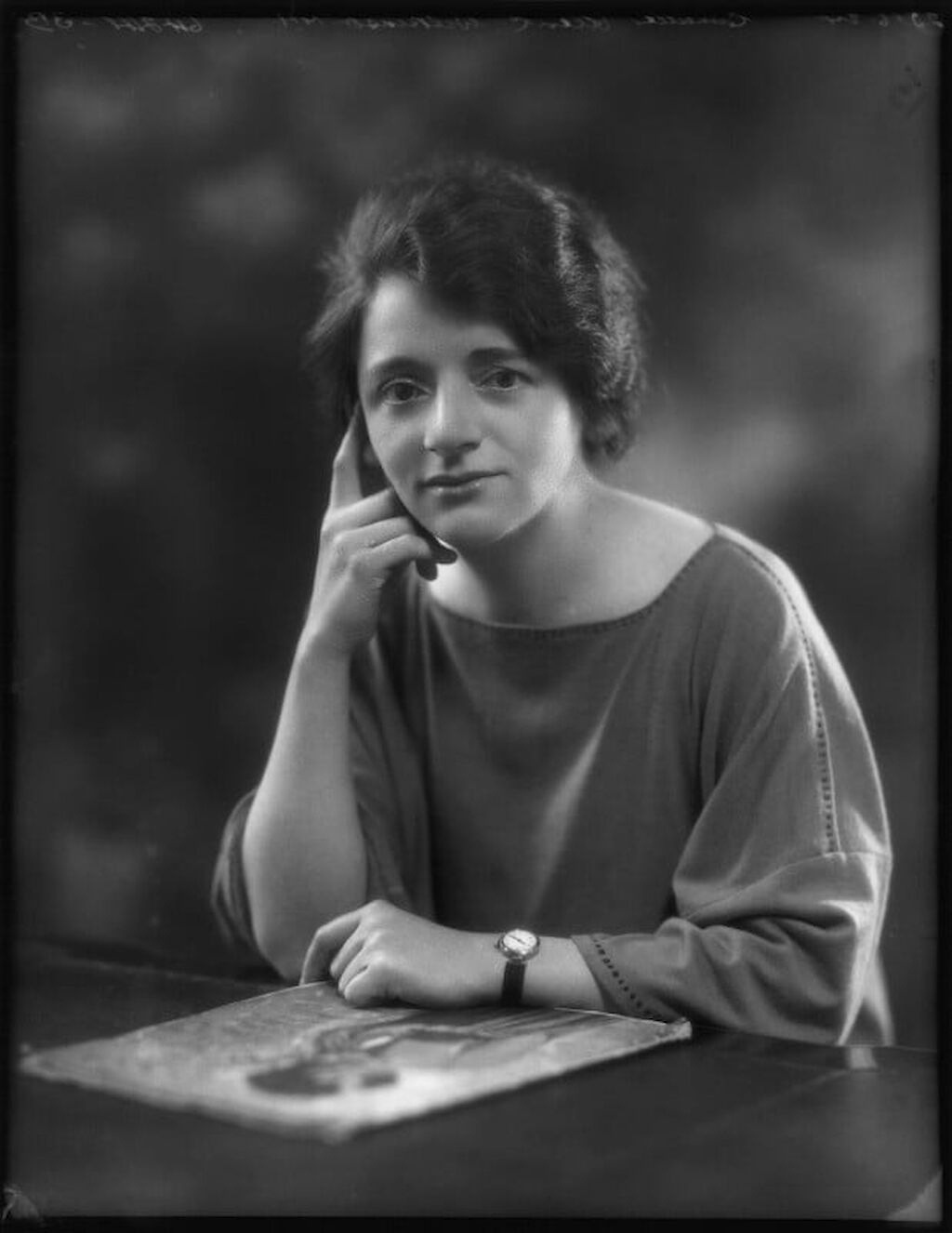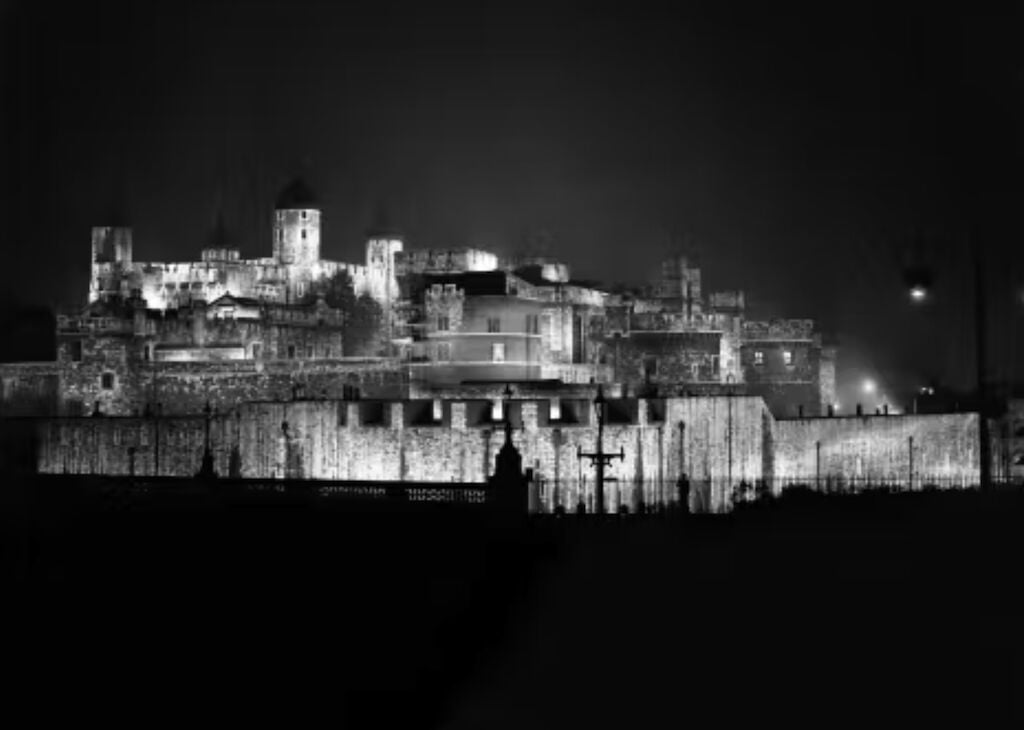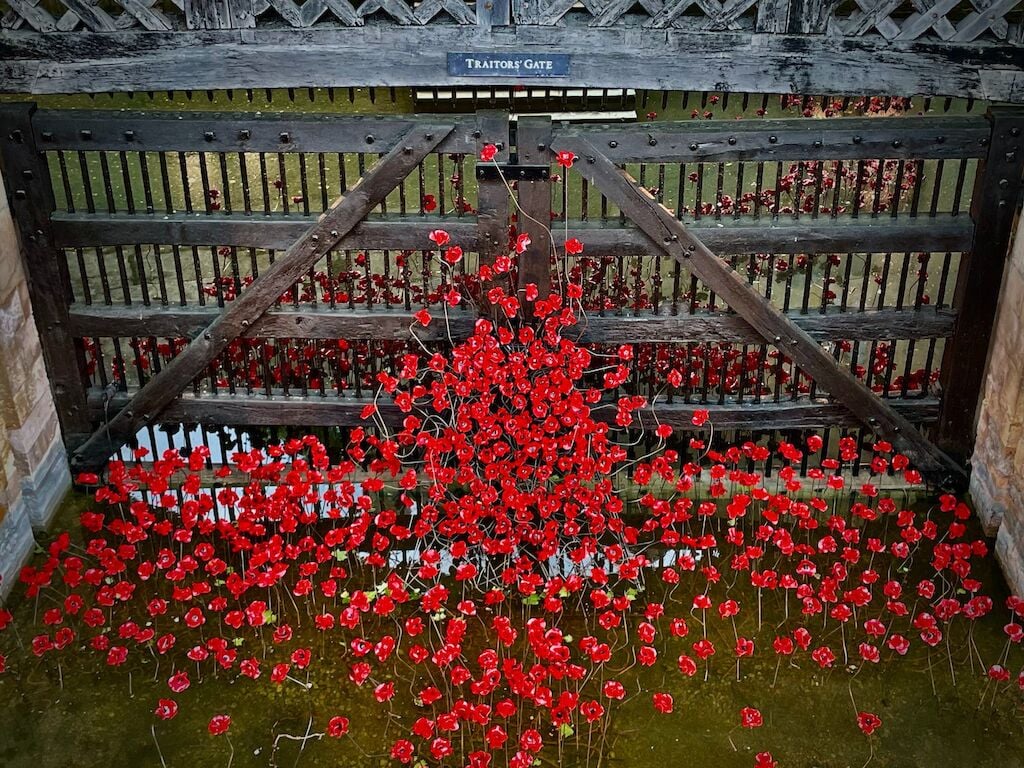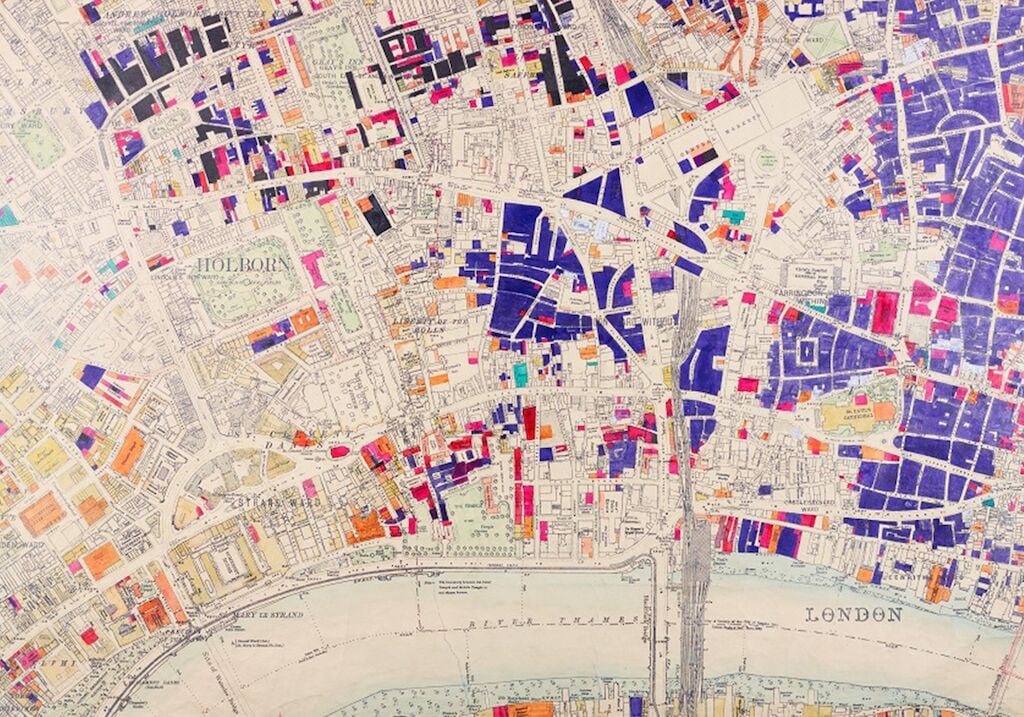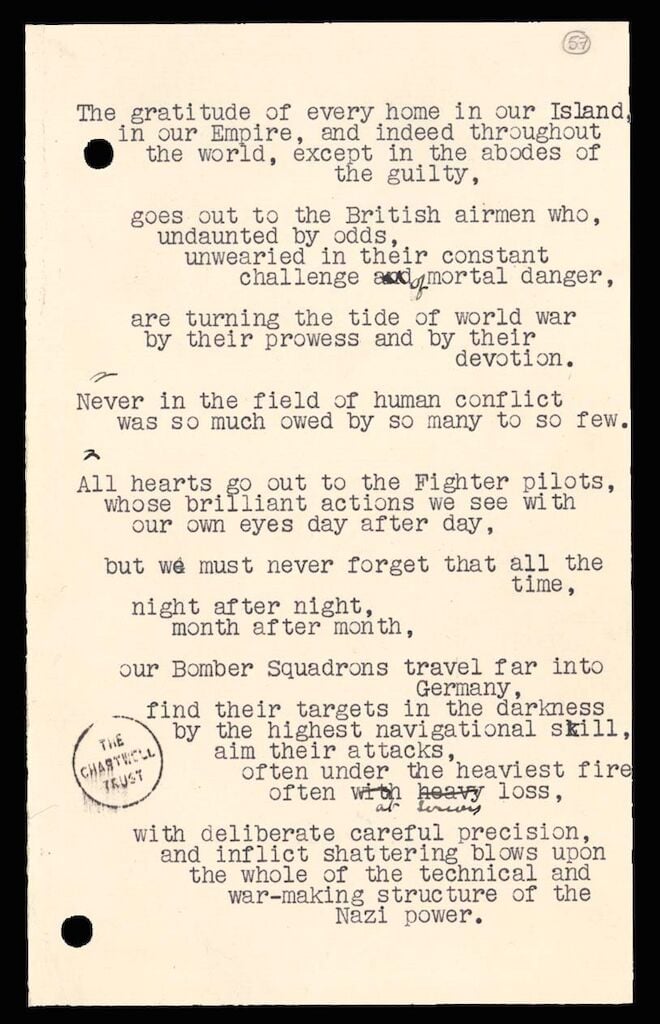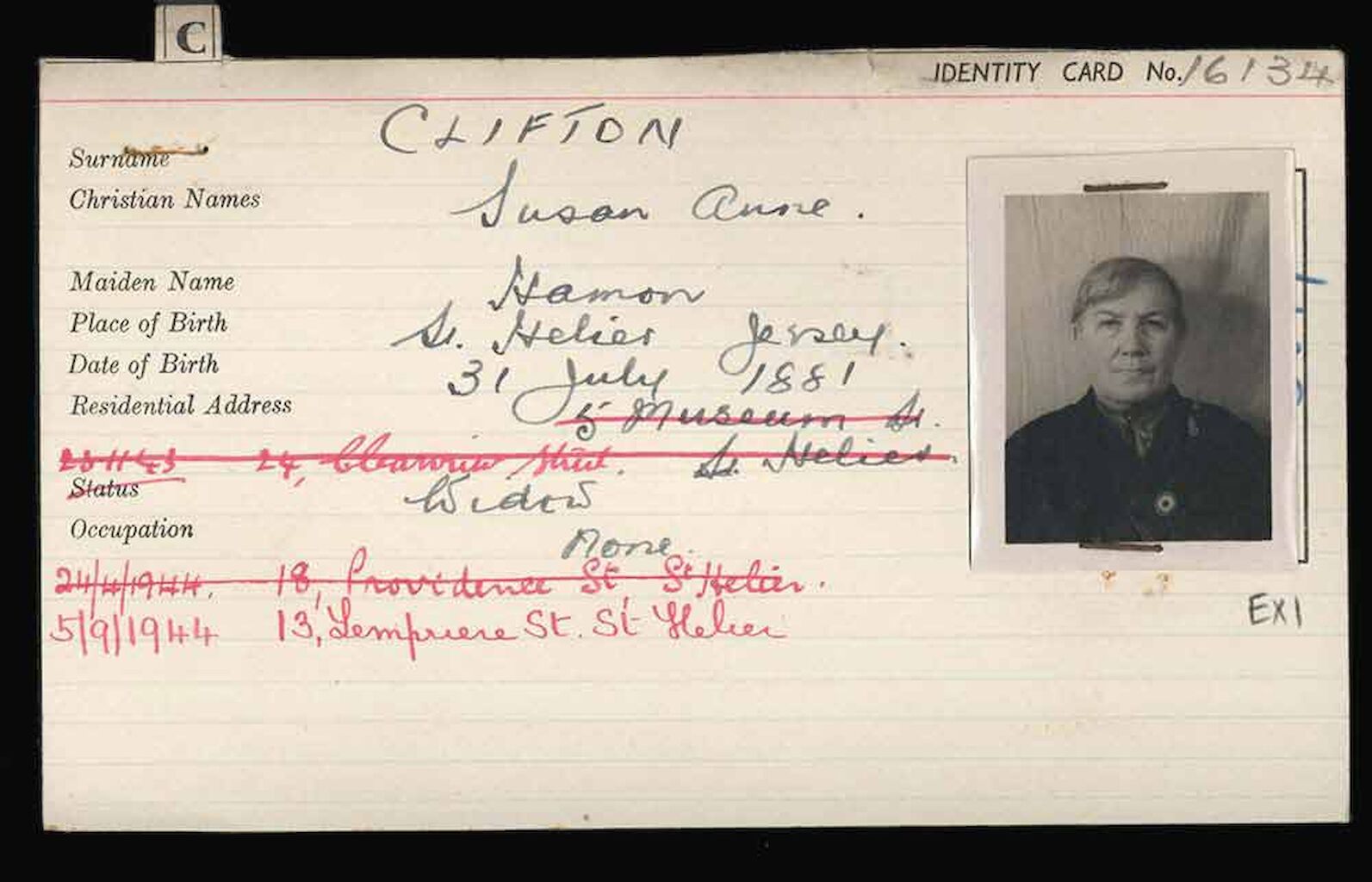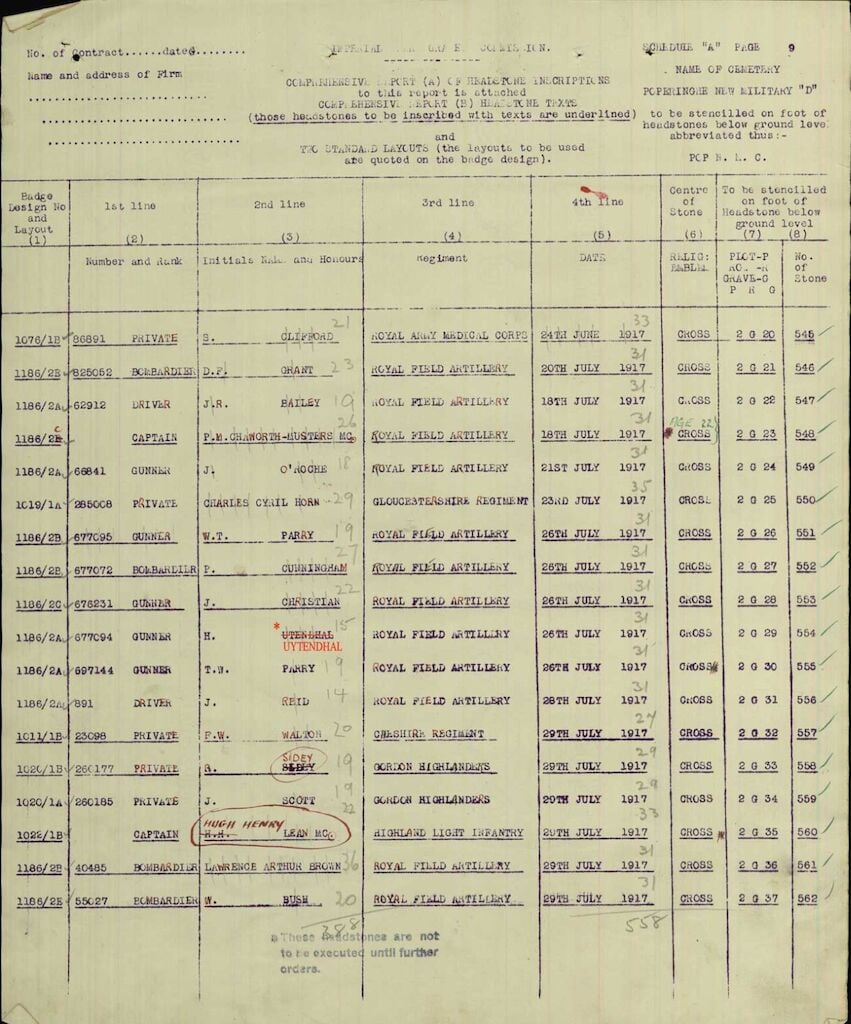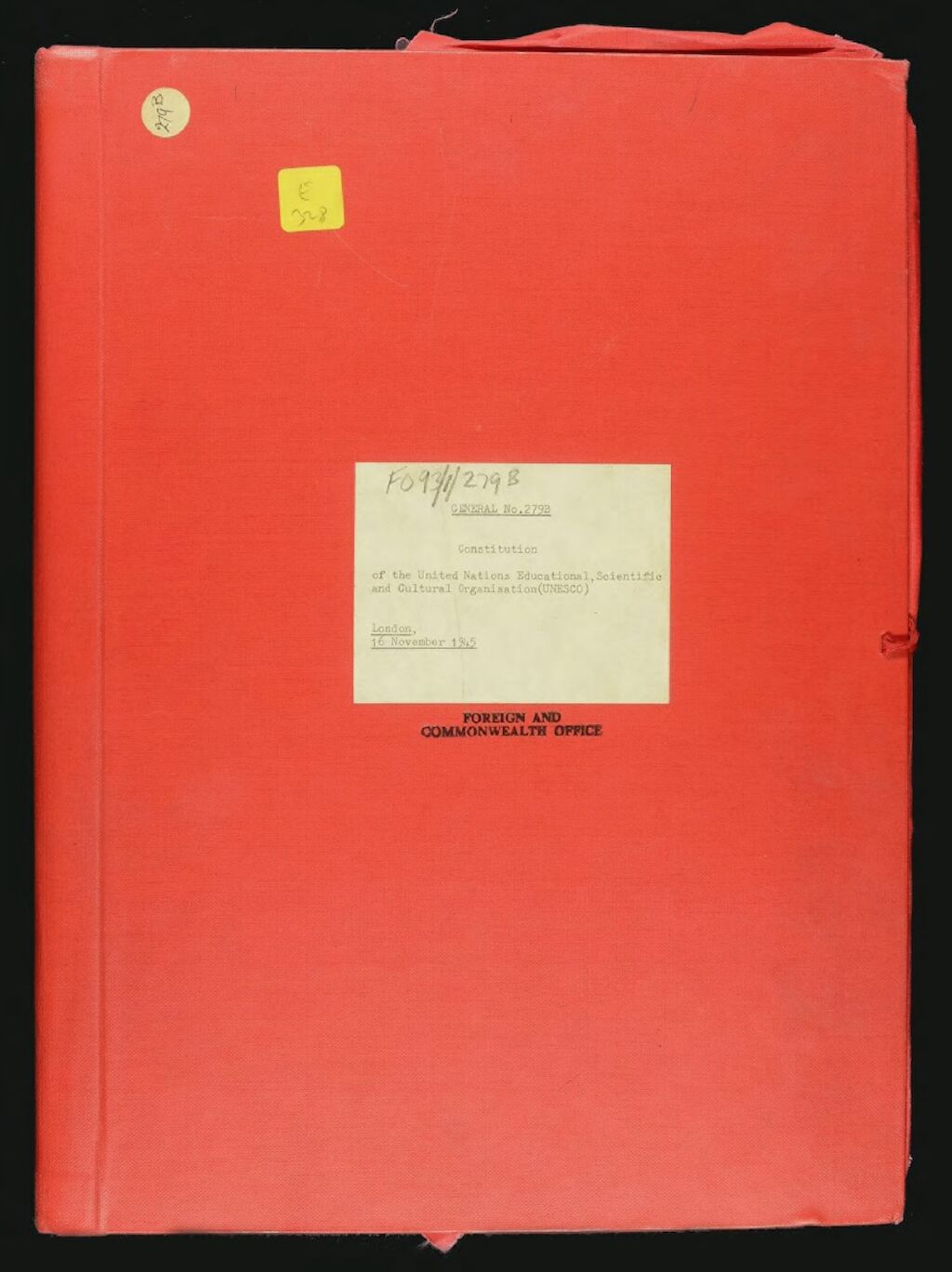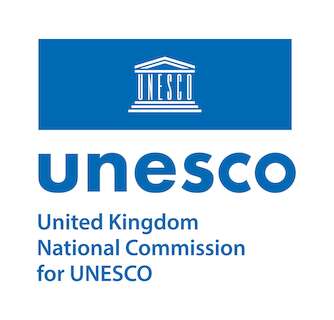Commemorating the 80th Anniversary of Victory in Europe (VE) Day
Thursday 8 May 2025 marks 80 years since VE (Victory in Europe) Day when the Second World War came to an end in Europe.
In honour of all of those that served, and the VE Day generation, on this page we highlight just a tiny selection of the myriad stories connecting the end of WWII in Europe to UNESCO designations, inscriptions and notable figures.
On VE Day in May 1945, Westminster Abbey hosted thanksgiving services every hour from 9am to 10pm, welcoming an estimated 25,000 people through its doors. You can view the 1945 VE Day Order of Service HERE
To mark the 80th anniversary of Victory in Europe Day a commemorative service will be held at Westminster Abbey on Thursday 8th May 2025 at noon, attended their Majesties The King and Queen and other members of the Royal Family. The service which will be led by the Dean of Westminster, The Very Reverend Dr David Hoyle and sung by the Choir of Westminster Abbey. At the start of the service, the Royal Family will join the congregation in a national two-minute silence of reflection and remembrance.
Throuhought May and June Westminster Abbey is holding a 'Beyond Victory' season of events about rebuilding society and the legacy of conflict, coinciding with the 80th anniversary of VE Day. UKNC Chief Executive and Secretary-General, James Bridge, will be participating in one of these events on Thursday 27 May.
More information on the Westminster Abbey 'Beyond Victory' season
2. Ellen Wilkinson
Ellen Wilkinson was a women integral to Allied Forces war effort and the formation of UNESCO.
During the Second World War, Ellen Wilkinson - a Labour Party politician - served in Churchill's wartime coalition as a junior minister, mainly at the Ministry of Home Security where she had responsibilities for air raid shelters and civil defence. By the end of 1941 Wilkinson had supervised the distribution of more than half a million indoor 'Morrison shelters'; reinforced steel tables with wire mesh sides, under which a family could sleep at home.
In April 1945, she was part of a parliamentary delegation that travelled to San Francisco to begin work on the establishment of the United Nations. In July 1945 Wilkinson was appointed Minister of Education in Clement Atlee's post-war Labour government.
In November 1945 Wilkinson chaired an international conference in London that led to the establishment of the United Nations Educational, Scientific and Cultural Organization (UNESCO). In one of her final speeches in parliament, on 22 November 1946, she emphasised that UNESCO stood for "standards of value ... putting aside the idea that only practical things matter". She prophesied that the organisation "will do great things".
3. Tower of London UNESCO World Heritage Site
At the outbreak of the Second World War, the Tower of London closed to the public and Tower residents were issued with gas masks and steel helmets and prepared themselves for regular blackout drills. By autumn 1939, the vacated galleries in the White Tower were re-purposed for the military. Chambers were used as a sports room and concert hall for troops, with a canteen and library on the ground floor and an air raid shelter in the basement.
The aerial bombardment of the Second World War across London's East End, caused significant damage to the Tower. Yeoman Warder Samuel Reeves and 70-year-old Lily Frances Lunn, who lived with her family in the North Bastion, were killed when a bomb struck the fortress on 5 October 1940, blowing apart the massive North Bastion and narrowly missing the White Tower.
On VE Day 1945, the Tower was illuminated with floodlights (shown above), and the East End of London celebrated with a week of street parties, although the shadow of all the lives lost hung over the festivities.
To mark the 80th anniversary of VE Day, a new special commemorative display of ceramic poppies has been installed at the heart of the Tower of London. The display sees nearly 30,000 ceramic poppies, made for the 2014 installation, ‘Blood Swept Lands and Seas of Red’, return to the Tower, marking the sacrifices made by so many during the Second World War.
The specially commissioned installation resemble a ‘wound’ at the heart of the Tower. Poppies pour across the lawn overlooked by the ancient White Tower, where the blood-red flowers will form a crater, with ripples flowing outwards. The unique installation will remain throughout the summer including VJ Day on 15 August, until 11 November, culminating in a moment of remembrance for Armistice Day.
More information on 'The Tower Remembers' poppy installation
4. UNESCO Memory of the World Inscriptions
The UNESCO Memory of the World Programme is a global initiative to safeguard the world’s documentary heritage against collective amnesia, the ravages of war, decay and deterioration. Memory of the World is the documentary heritage equivalent of UNESCO World Heritage Sites.
Several of the UNESCO Memory of the World inscriptions - on both the National and International registers - in the UK relate to the Second World War, and their inscription helps to safeguard these unique library and archive collections, and make them accessible to everyone for generations to come:
Churchill Archives
The Churchill Archives collection is the personal archive of Sir Winston Churchill (1874-1965), soldier, writer, politician, orator and statesman. The archive was assembled by Sir Winston during his long-life and career and comprises his personal, public, political and literary correspondence and papers, including his drafts and annotated notes for his celebrated speeches and broadcasts.
To mark the 80th Anniversary of VE Day, Chartwell (the family home of Sir Winston Churchill) will be hosting a programme of events including special guided tours of the house and gardens.
Jersey Occupation Archive
The Channel Islands were the only part of Britain to be occupied by Hitler’s German forces during the Second World War. The Jersey Occupation Archive includes the Occupation Registration Cards, which form a pictorial census of the Islanders who were occupied.
To mark the 80th Anniversary of VE Day, Jersey Heritage will be holding a 'Liberation 80' series of exhibitions, talks and tours throughout 2025, including the opportunity to explore the Jersey Occupation Archives.
London County Council Bomb Damage Maps
An extraordinary set of maps, the London County Council Bomb Damage Maps indicate, building by building, bomb damage in London during the Second World War. An iconic and multi-layered source for London’s experience of war and its aftermath.
To mark the 80th Anniversary of VE Day, the London Archives has an exhibition 'London in the Second World War' (running until 30 October) which features some of the Bomb Damage Maps.
Commonwealth War Graves Archive
This archive consists of over 300,000 documents which record the details and commemoration location of each casualty the Commission is responsible for commemorating, some 1.7 million individuals in total from both world wars.
To mark the 80th Anniversary of VE Day, the CWGC is taking it's 'For Evermore Tour' travelling exhibition across the UK throughout May, June and July. At the centre of the tour is the Torch for Peace – a lasting symbol of commemoration, inspiring future generations.
5. The UNESCO Constitution
As noted in the story of Ellen Wilkinson above, UNESCO itself was founded out of the ravages of WWII. As we commemorate and celebrate the 80th anniversary of VE Day, it is vital to remember all those who have lost their lives to conflict and to reflect on the first line of UNESCO's Constitution:
"That since wars begin in the minds of men, it is in the minds of men that the defences of peace must be constructed."

